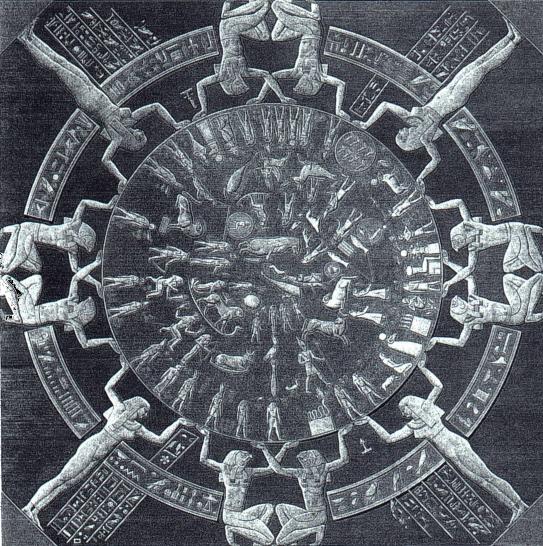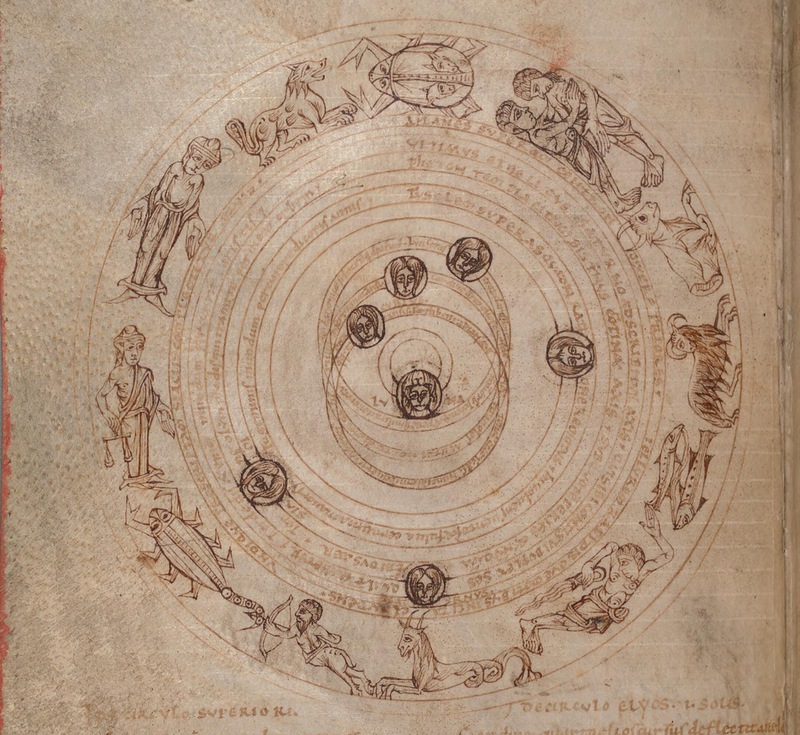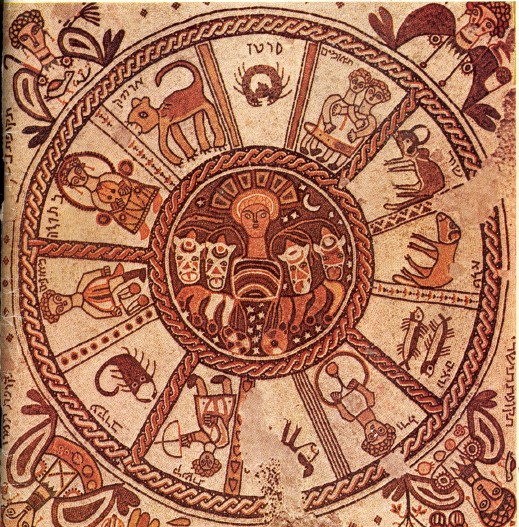The Babylonian star catalogs entered Greek astronomy in the 4th century BC, via Eudoxus of Cnidus.[21][22] Babylonia or Chaldea in the Hellenistic world came to be so identified with astrology that “Chaldean wisdom” became among Greeks and Romans the synonym of divination through the planets and stars. Hellenistic astrology derived in part from Babylonian and Egyptian astrology.[23] Horoscopic astrology first appeared in Ptolemaic Egypt (305 BC–30 BC). The Dendera zodiac, a relief dating to ca. 50 BC, is the first known depiction of the classical zodiac of twelve signs.
The earliest extant Greek text using the Babylonian division of the zodiac into 12 signs of 30 equal degrees each is the Anaphoricus of Hypsicles of Alexandria (fl. 190 BC).[24] Particularly important in the development of Western horoscopic astrology was the astrologer and astronomer Ptolemy, whose work Tetrabiblos laid the basis of the Western astrological tradition.[25] Under the Greeks, and Ptolemy in particular, the planets, Houses, and signs of the zodiac were rationalized and their function set down in a way that has changed little to the present day.[26] Ptolemy lived in the 2nd century AD, three centuries after the discovery of the precession of the equinoxes by Hipparchus around 130 BC. Hipparchus’s lost work on precession never circulated very widely until it was brought to prominence by Ptolemy,[27] and there are few explanations of precession outside the work of Ptolemy until late Antiquity, by which time Ptolemy’s influence was widely established.[28] Ptolemy clearly explained the theoretical basis of the western zodiac as being a tropical coordinate system, by which the zodiac is aligned to the equinoxes and solstices, rather than the visible constellations that bear the same names as the zodiac signs


